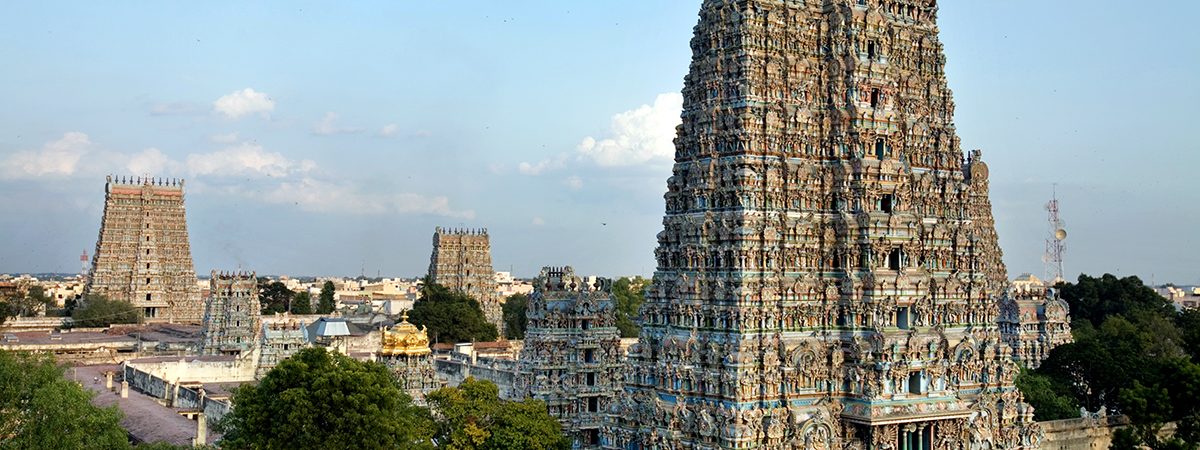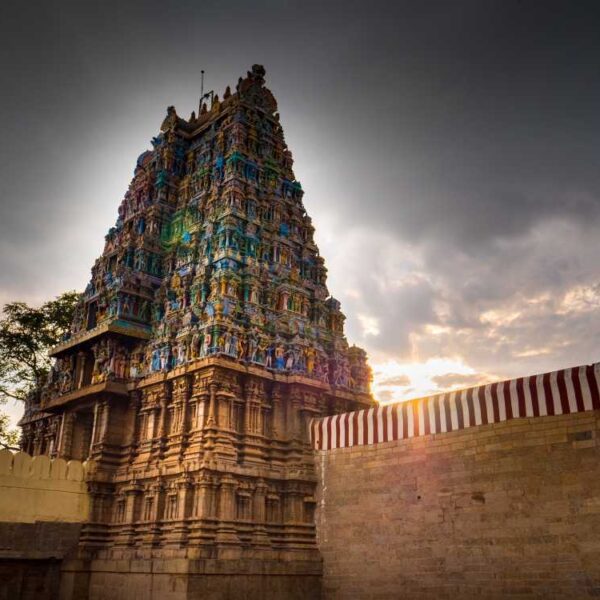Complete Guide about Meenakshi Temple
-
Location
Meenakshi Amman Temple Madurai Main, Madurai, Tamil Nadu 625001
-
Timings
Every day
5:00 AM to 12:30 PM
& 4:00 PM to 10:00 PM -
Entry Fee
No Entry fee


Meenakshi Temple
About Meenakshi Temple
Legend has it that the King of Gods Indira found the sacred Suyambulingam in Kadambavanam and later enshrined it there. The Lord allegedly appeared on Indira’s car in this temple, serving as evidence of this.
There are numerous historical relics of the temple that date back to the first century A.D. After the Islamic conqueror Malikkapur invaded in the year 1310, the temple was almost entirely demolished. The conquerors destroyed the majority of the temple’s historic statues because Islamic kings were notorious for their intolerance of other faiths.
The temple is mentioned in lyrics by the Hindu saint Thirugnanasambandar that date back to the first half of the seventh century. In his songs, the Lord is referred to as Alavai Iraivan. When the Hindu Kings retook control of Madurai in the late 14th century, the temple was brought back to its original splendour. As the temple was almost completely reconstructed, this may also be seen as the start of a new era in its history. According to sources, the construction of the current form of the temple included significant contributions from King Thirumalai Naicker.
The HR and CE division of Tamil Nadu is currently in charge of running the Meenakshi Amman Temple in Madurai.
Madurai Meenakshi Temple Official website Link www.maduraimeenakshi.org
Deities in temples
The Lord who presided over this holy sanctuary was formerly known by the names Chockanathar and Chockalinga Perumal.
The god is currently referred to by many names, including Sundareswarar, Meenakshi Sundarar, Somasundarar, Kalyana Sundarar, Shanbaga Sundarar, Attavai Shevagan, Chockalingam, Adiyarku Nallan, Adhiraveesi, Vilayaduvan, Abhideka Chockar, Azhagiya Chockar, Puzhugu Neidhu Chock

The Temple Structure:
The circumference of the Adi Veedhi, the path inside the great walls, is 830 feet (249 metres) on the east west and measuring 730 feet (219 metres) from North South direction. The temple, which has five entrances, covers an area 847 feet (254.1 metres) long and 792 feet (237.6 metres) wide in the North South direction.
The devotees will be granted all of their wishes for prosperity if they take a bath in the waters of this pond of Golden Lotus on Amavasya (new moon) day, the first day of the month, days of eclipse, and other auspicious days and adore the Lord.
The devotees will be granted all of their wishes for prosperity if they take a bath in the waters of this pond of Golden Lotus on Amavasya (new moon) day, the first day of the month, days of eclipse, and other auspicious days and adore the Lord.
The Gopurams
The temple contains four Rajagopurams, or magnificent towers, five towers atop the Lord’s sanctum sanctorum, three towers atop the Goddess’ sanctum sanctorum, and two golden towers, or gopurams, all of which have been masterfully built and sculpted. Based on the stages they are in, all fourteen towers have been divided,
Four of the nine-tier gopurams
Chittirai gopuram, one of seven tiers
five tiers of gopurams
two of the three-tier gopurams
Two golden gopurams
Four of the nine-tier gopurams
Chittirai gopuram, one of seven tiers
five tiers of gopurams
two of the three-tier gopurams
Two golden gopurams


Inscriptions :
There are around 44 stones engraved on the walls of the corridors leading to the Sundareswarar and Meenakshi Amma shrines. These inscriptions provide information on the land given to the temple, the worship rituals, a list of the goods required to perform neivethiyam, details on the people’s religious status in ancient times, government procedures, and social norms.
Dekho Apna Desh
The DAD of Tourism
Get Direction to Meenakshi Temple
Near Attractions









